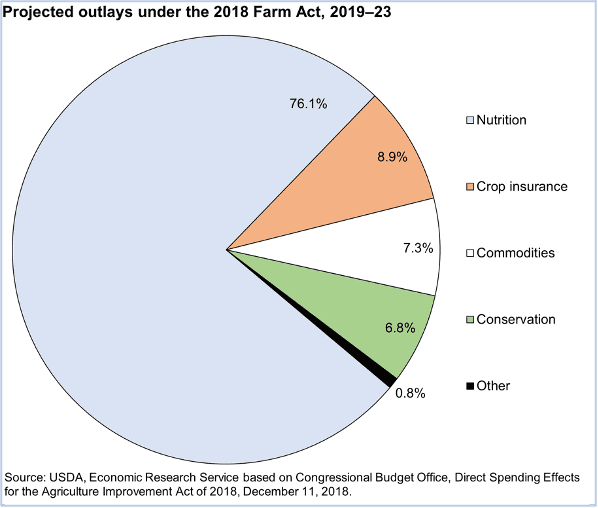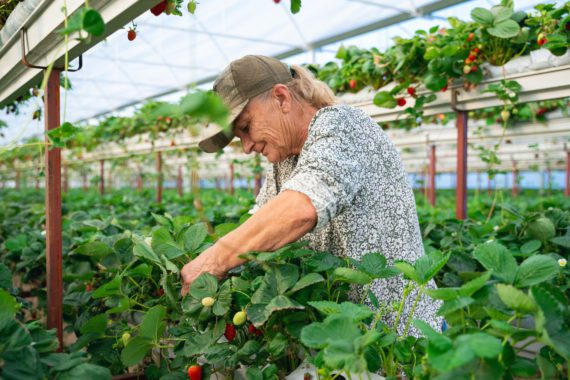“Farm bill” is a narrow name for an enormous piece of legislation that impacts many parts of the U.S. food system. Much of the farm bill is not about farms: nearly three-fourths of the bill’s funding goes to nutrition programs, almost all of that to the Supplemental Nutrition Assistance Program (SNAP). In 2021, SNAP helped more than 40 million Americans put food on the table—a testament to the significance of nutrition programs to the U.S. food system.
Since farming is undeniably concentrated in rural areas, it would make sense that funding that supports farms would contribute significantly to the economy in surrounding rural areas. Stronger, more productive farms should help create jobs and economic opportunities. But this is far less true than one might expect. In fact, decades of farm bill policy directed disproportionate funding to large farms, causing a dramatic shrinkage in the number of small and medium-sized farms in every part of the United States. This, in turn, led many people to leave rural areas as economic opportunities dried up. The counties with the highest rates of depopulation are also the counties with the highest levels of funding for farms.
The farm bill’s dozen or so titles include a separate account for rural development, but it contains less than 1 percent of the farm bill’s funding. The pie chart accompanying this article has no category called rural development, because it has been folded into the tiny sliver labeled Other.
How Farm Bill Funding Is Spent

SNAP funding—which, as mentioned, is a key part of the farm bill—reached a record high of more than $113 billion in 2021. Although this was due largely to the impacts of the COVID-19 pandemic, the funding level has exceeded $60 billion every year since 2008 and is expected to remain at this level or higher.
All these factors help explain why the largest source of farm bill funding for rural areas is not financial support for farms, but SNAP. U.S. rural areas have higher participation rates in SNAP than urban areas.
Also, a USDA study of the program following the Great Recession found that SNAP increased employment and economic output more than twice as much in rural areas as in metropolitan areas. Over the six years of the study (2009-2014), SNAP benefits calculated in 2014 dollars generated, on average, an annual increase in rural economic output of $49 billion. This far exceeds the impact of the rest of the farm bill on the rural economy.
The contributions of SNAP to rural areas are also more significant than those of other federal programs.
When USDA studied the impact of SNAP benefits on local employment during the Great Recession, it found that, per dollar spent, “SNAP had a greater effect on employment than [other] government payments combined, including Social Security, Medicare, Medicaid, unemployment insurance, and veterans’ benefits… [The effects] were also larger than the employment effects, per dollar spent, of all [other] federal government spending combined.” SNAP contributed more to reducing unemployment than any other federal poverty program.
Unlike the rural development title of the farm bill, SNAP is designed to prioritize people in areas with the highest poverty rates and most depressed economies. Making areas with the greatest need a top priority, along with more resources, could improve the rural development component of the farm bill.
The realities of farm bill funding, including the 2018 legislation that is currently in force, shape Bread’s priorities as Congress takes up farm bill reauthorization in 2023. Bread has supported SNAP and improvements in its policies for many years, and the program remains a priority. Although SNAP benefits cannot provide solutions to the long-term causes of hunger, the U.S. government must help families put food on the table now. SNAP is our country’s first line of defense against hunger.
Todd Post is senior domestic policy advisor with Bread for the World.



